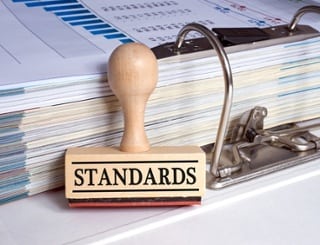It is important for content developers to know the difference between content standards and goals. Why? Because these have the capability of working against or assisting a content developer’s plans. Just like the framework of a house, standards and goals are the heart of a lesson and give it purpose within the educational environment. Read below to learn three quick tips to differentiate between the two:
- Content Standards Indicate Proficiency
Content Standards, regardless of the organization they’re from, always provide guidelines that indicate proficiency in a skill. In fact, according to a previous blog post, standards indicate three things: 1) the desired level of proficiency within Bloom’s Taxonomy, 2) the skill that students are expected to master, and 3) a way in which to measure the skill. Unlike content standards, goals go beyond a basic level of proficiency. The term itself indicates that the standards act as stepping stones to the goal, which is the long-term result of meeting the standards outlined in instruction. The comparison below should illustrate these differences.

Standard: Written expectations of what students are expected to know at a specific stage of education. These are based off of learning objectives.
Goal: Unique to an individual student. May stem from a standard, but also relates to a student’s academic habits and organization. Goals stretch beyond standards.
CCSS.ELA-LITERACY.RI.9-10.3
Analyze how the author unfolds an analysis or series of ideas or events, including the order in which the points are made, how they are introduced and developed, and the connections that are drawn between them.
Ashlee will be able to confidently analyze Mark Twain’s Tom Sawyer for their upcoming synthesis paper and score an “A”.
A standard indicates a level of proficiency.
A goal indicates a desired result that goes beyond basic proficiency.
A standard applies to all students within a classroom.
A goal applies to an individual within a classroom.
2) Standards Have Different Expectations
At the end of the day, when a student demonstrates mastery of a standard, their teachers rejoice in knowing they have completed their mission. “Standard” ultimately indicates an acceptable level. For example, in order to participate in a sports team after school, a student may have to meet specific standards. Their grade point average must meet requirements, they must pass a physical examination by a doctor, and they must attend practice on a regular basis. Goals, on the other hand, are desired results that stretch beyond standards. Goals seek to go above and beyond the standard in order to truly showcase achievement.

3) Standards are Generalized
Standards provide expectations for every student in a teacher’s classroom. Conversely, goals are unique to an individual. Standards may be predetermined by a specific organization, but goals are always thought of by the student who is big enough to dream. One could argue that goals are more personalized as a result.




